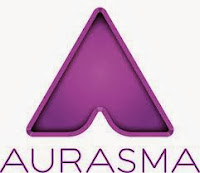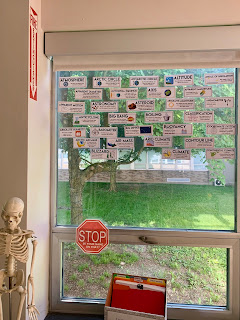1c: Setting Instructional Outcomes with Augmented Reality in the Classroom
 This is going to knock your socks off!
This is going to knock your socks off!The other day I found a new app (new to me at least) and I think it might change education as we know it. As you can imagine I have gone absolutely crazy trying out some different ways to use it. The app (Aurasma) is free and it can be downloaded from iTunes here:

https://itunes.apple.com/us/app/aurasma/id432526396?mt=8 (It is also available for Android devices too.)
What are you waiting for? Download the app!
This blog post won't mean much to you if you don't see it in action.
Here is the write up on iTunes:
Aurasma – a new way to see and interact with the world
Aurasma is an augmented reality app that’s changing the way millions of people see and interact with the world.
· Bring tagged images, objects and even physical locations to life with interactive digital content, such as video, animations and 3D scenes, we call Auras
· Look out for our ‘A’ logo in newspapers, magazines, books and on product packaging and clothing–wherever you spot the ‘A’, there’s an Aura for you to discover
· Use the map feature to discover Auras at nearby locations
· Browse the ‘explore’ and ‘featured’ sections of the app to find the latest and most popular Auras Aurasma is the only application that lets you create and share your own augmented reality.
· Use the simple tools within the app to create your own Auras and share them with friends and other Aurasma users
· Create Auras by choosing from thousands of digital animations already on the platform or alternatively use your own photos and videos
· Most popular user-generated Auras include adding 3D dinosaurs to your street, sending a video message on a greetings card, leaving hidden clues in a treasure hunt, adding instructional information to a machine and augmenting text books and project work in education
Use Aurasma to get creative and share digital content in a new way. There’s a whole world out there to tag.
What’s your Aura?
So this is how I use it in the classroom:
I give my students instructions on how to download the app and follow me on Aurasma. Link to the handout here.
This blog post will make more sense to you if you follow the directions in the handout and sign up to follow me (ballingbiology) on the Aurasma app.
I then have them go around the room and scan for Auras. To get them used to the app I have them practice with some of my family pictures where I have tagged a funny family video for them to see.
I also have put informational videos with some of the instructional models I have in the classroom. Like this Fluid Mosiac Model that has a video tagged that goes with it. Another example is this Diffusion model with a diffusion video linked to it.
In an upcoming lab I have created and linked videos that supplement what they read when doing the lab. Some are videos from Youtube, others are videos or photos that I took showing them how to do the lab.
Here is a link to part of the lab...print it out and check out the "Auras." You can scan and see auras on the lab where I have placed a small Aurasma symbol like this:
NOTE: You do not have to put the symbol for the Auras to work, I put them there so my students know where to look.
IF You would like to purchase the entire lab, it is available at my Teachers Pay Teachers website here: http://www.teacherspayteachers.com/Product/What-are-Enzymes-Laboratory-Activity-1357972
What are some other ways this can be used?
I think this can be VERY powerful in education for many reasons. Here are some I just thought up in the past couple days:- A student can see a video of the concept when they need it, watch it as many times as they want and learn at their own pace.
- Teachers can record examples for the students or show them how to do something for example: in the lab I put a short video explaining how I want them to label and draw the graph with their data.
- It could also be used for students on home instruction.
- Teachers could add videos that go along with material in the textbook.
How do I create the Auras?
These are the very brief instructions from the makers of Aurasma
It took a LOT of trial and error to figure out exactly how to do it...so I'm going to show you step by step what I did.
Using an iPad or ipod's camera app, record a video or take a picture.
Download the Aurasma app and sign in. (following each step, I have included a screen shot of what you should see)

In the app click on the White A in the bottom center of the screen.

Use one of their free Auras or...
Use one of your own (like the picture or video you just recorded. Click on Device in the bottom right
click on the purple + box
give it a name
click finish
click on that image and click on select
the camera will open up in the app
use the camera to capture the Trigger Image
To create a tag, you need the image to register green in the bar below the picture (sometimes it helps to make the viewing box smaller and move the device closer or farther away)
adjust the size and location of the photo or video
and click Finish
I hope that this blog post brings you some inspiration and please share with me how you plan to use this in your classroom.
originally posted on Ballinwithballing.blogspot.com






























Comments
Post a Comment